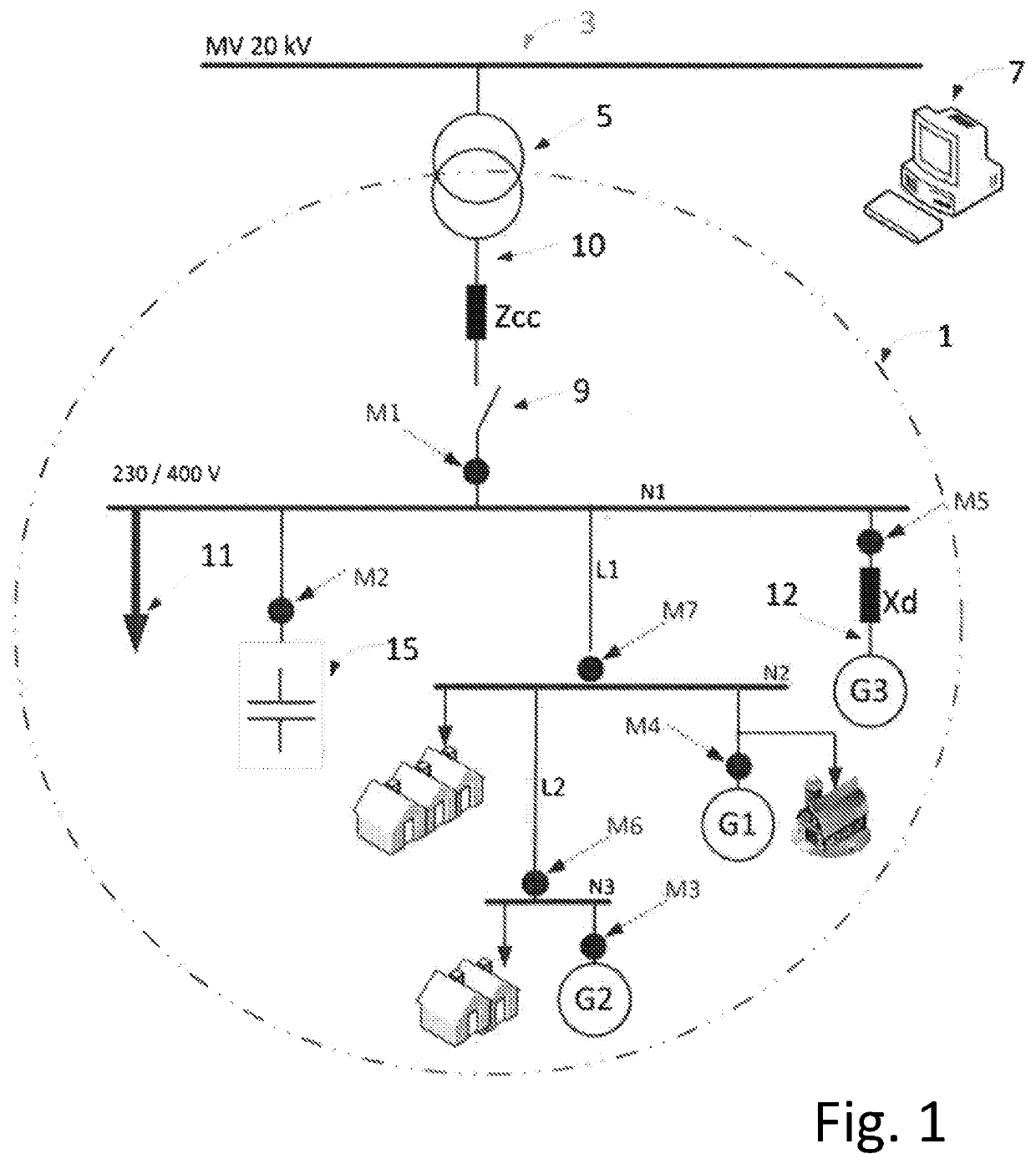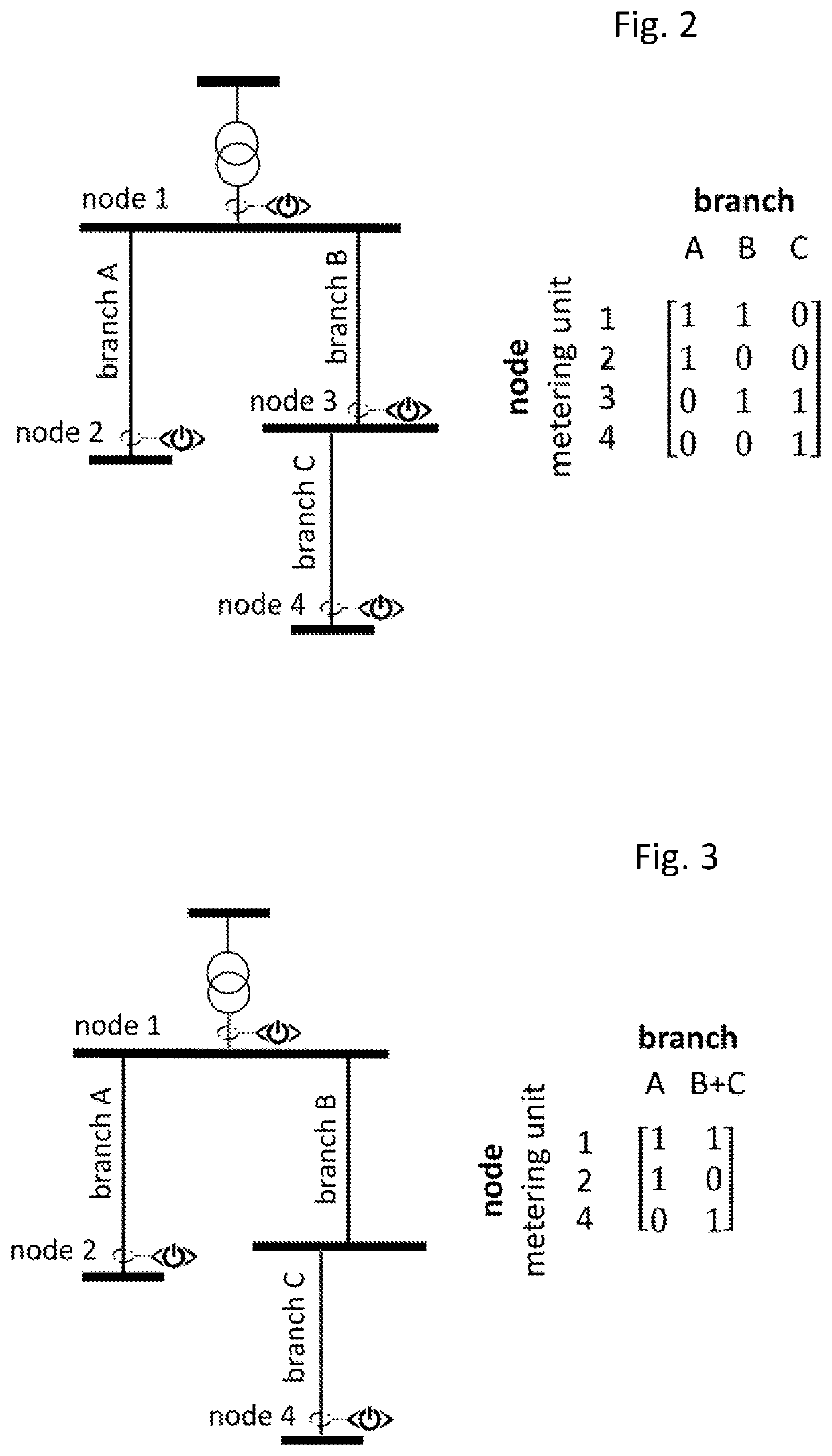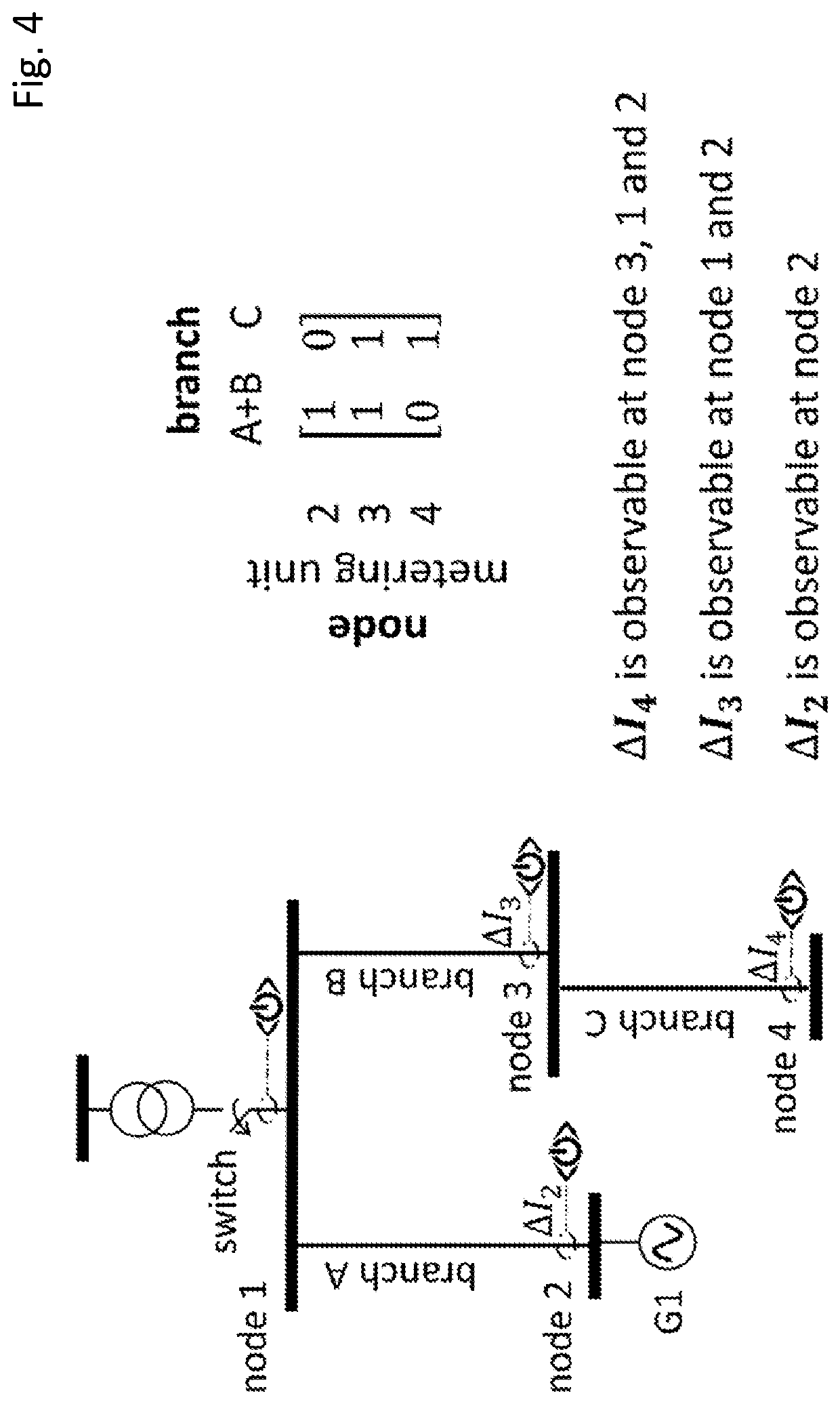Method for estimating the topology of an electric power network using metering data
a technology of electric power network and metering data, applied in the direction of measuring devices, instruments, measuring using digital techniques, etc., can solve the problem that distribution system operators may not have accurate and up-to-date knowledge of network topology
- Summary
- Abstract
- Description
- Claims
- Application Information
AI Technical Summary
Benefits of technology
Problems solved by technology
Method used
Image
Examples
example i
[0090]The appended FIG. 8 shows the single-line diagram of a network with four metering units (left side) and the time-stamped current measurements from every metering units (right side). The corresponding current sensitivity coefficient matrix is calculated by means of generalized least squares multiple linear regression as explained above. The computed current sensitivity coefficient matrix is the following:
KII=[1.00000.78070.75420.58540.11421.00001.2004-0.04890.00960.10391.00000.00050.5111-0.29180.03781.0000][0091]Note that the diagonal elements, given in bold digits indicate each meter's coefficient with respect to itself and is equal to 1.
[0092]The “slack node indicator vector” of the absolute current sensitivity matrix is:
S4×1=[1.90861.08600.37231.1259]
[0093]The slack node indicator vector shows that “Meter 1” is connected to the slack node (i.e. node 1). Thus, the first column is removed from the current sensitivity matrix KII. The reduced 4×3 matrix is given below where the ...
example ii
[0095]The appended FIG. 9 shows the same network as FIG. 8. However, the network is only provided with three metering devices. Note that in this case, a different numbering order is selected for the meters, in other words “Meter 1”, “Meter 2”, and “Meter 3” are placed at node 3, node 1, and node 4, respectively.
[0096]In this case, the resulted current sensitivity coefficients are given in following matrix.
[0097]In this case, the resulted current sensitivity coefficients are given in following matrix:
KII=[1.00000.0245-0.00521.85691.00000.6008-0.31700.48461.0000]
[0098]The “slack node indicator vector” of the absolute current sensitivity matrix is:
S3×1=[0.32442.29121.1218]
[0099]It indicates that “Meter 2” is connected to the slack node (i.e. node 1). Thus, the second column is removed from the current sensitivity matrix. The reduced 3×2 matrix is given below where the maximum sensitivity coefficient at each column, regardless of the meter's coefficient with respect to itself, is shown ...
example iii
[0102]As previously discussed, the network topology can be also inferred from the current-power sensitivity coefficients. This alternative current-power method is outlined below. It requires that:
[0103]the electric power network comprise a set of metering nodes (N11, . . . , N14, see FIG. 10) comprising a slack node (N11) and other metering nodes (N12, . . . , N14), a slack branch (20) connected to the slack node, and a set of other branches (A, B, C) arranged for connecting the metering nodes one to another, and the electric power network further being provided with a monitoring infrastructure comprising means for measuring the voltage of each one of said measuring nodes, wherein the means for measuring comprises metering units (M11, . . . , M17), one (M11) of the metering units being arranged for measuring the electric current flowing into, or out of, the slack node (N11) through the slack branch (20), and each one of said measuring nodes further being provided with metering units...
PUM
 Login to View More
Login to View More Abstract
Description
Claims
Application Information
 Login to View More
Login to View More - R&D
- Intellectual Property
- Life Sciences
- Materials
- Tech Scout
- Unparalleled Data Quality
- Higher Quality Content
- 60% Fewer Hallucinations
Browse by: Latest US Patents, China's latest patents, Technical Efficacy Thesaurus, Application Domain, Technology Topic, Popular Technical Reports.
© 2025 PatSnap. All rights reserved.Legal|Privacy policy|Modern Slavery Act Transparency Statement|Sitemap|About US| Contact US: help@patsnap.com



